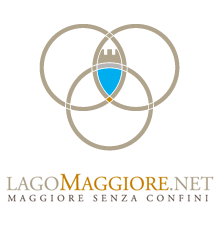
- CHIESE, SANTUARI, LUOGHI E PERCORSI SACRI
- ISLANDS
Brissago
Brissago is a Swiss municipality nestled on the western shore of the Ticinese Gulf, a few kilometres from the border with Italy and approximately 7 km from Cannobio. North, in the opposite direction, just as many kilometres separate it from Ascona. The town, which is on the lakeshore at 196 asl, is the lowest in Switzerland but its hamlets extend on the scenic terraces up to 400 metres asl.
Its history, which some believe to begin sometime around the year 1000 BC, is proof of the desire for autonomy and freedom characterising these traders and craftsmen.
Here, the Virginia cigar was produced on Lake Maggiore at the Brissago Tobacco Factory (established in 1847). Particularly well-known, it was re-baptised the Brissago cigar and is still known today.
Tourism: Isole di Brissago (Brissago Islands) and the Lido
Both lake and mountain lovers are at ease in Brissago. On the one hand are the charming Isole di Brissago with a botanical park (a must-see) and the Lido with its modern facilities and everything for relaxation and entertainment. On the other, are the majestic alpine scenery, strolls, and the nature paths ascending to over 2,000 metres on Mount Ghiridone or Limidario.
Art lovers can visit the Church of Madonna del Ponte (or in Selva) and the Church of SS. Pietro e Paolo, both proof of the glorious Renaissance period. The baroque style of Palazzo Branca-Baccalà - a patrician home located in the old town centre – reminisces of Brissago's opulence during the 1600's, and is now home to the Leoncavallo Museum dedicated to Neapolitan Ruggero Leoncavallo, who stayed in the town for a long time.
A short distance from the village, on a charming rocky headland whose fascinating view spans over Lake Maggiore, is the Sacro Monte dell’ Addolorata (or Sacro Monte Addolorato), a sacred complex built starting in 1709.
Events in Brissago
Every year, the town dedicates Festival Leoncavallo to music and to this musician who became an honorary citizen of Brissago. This music event involves internationally-acclaimed musicians and singers.
Several enthusiasts and friends (united under the Pitoc Association) have succeeded in bringing Carnival in Brissago back to the top. It is celebrated based on the Ambrosian calendar (like in Milan): increasingly more people take part in the traditional Rogo del Pagliaccio (burning of the clown), the peak and concluding event. In order to finance the carnival, Pitoc also organises festivals Fescta di Pesitt in the spring and Fescta del Porscell at the end of the summer.

